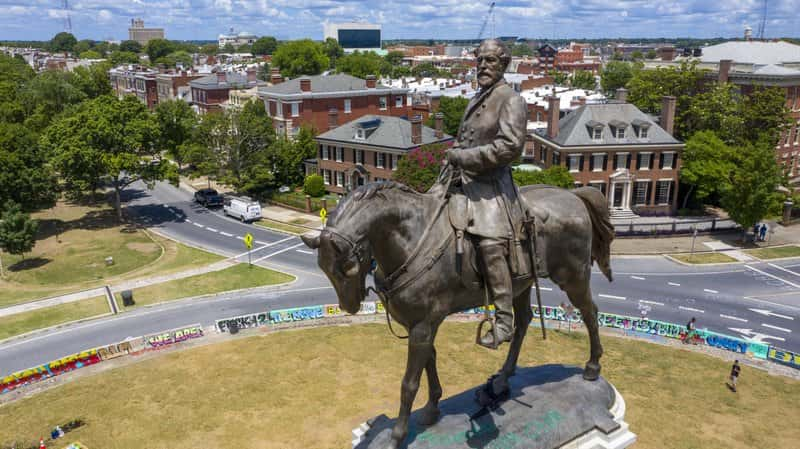
RICHMOND, Va. (AP) — A judge heard arguments Tuesday but did not immediately rule on whether to dismiss a lawsuit challenging Virginia Gov. Ralph Northam’s plans to remove an enormous statue of Confederate Gen. Robert E. Lee along Richmond’s famed Monument Avenue.
An injunction issued in the lawsuit currently prevents Northam’s administration from moving forward with plans announced after the death of George Floyd to take down the bronze equestrian statue of Lee. The figure erected in 1890 is now one of the country’s most prominent tributes to the Confederacy.
Virginia Attorney General Mark Herring is seeking to have the lawsuit tossed and the injunction dissolved.
“The government officials of 1890 had no power and no right to make a legally enforceable promise that the Commonwealth of Virginia would display a massive government-owned monument on government-owned property forever,” Solicitor General Toby Heytens argued in court.
The plaintiffs, a group of property owners who say in court papers that they live in close proximity to the monument, argue that Northam’s order violates several provisions of the Virginia Constitution as well as a restrictive covenant contained in the 1887 and 1890 deeds that transferred the monument and ground it rests on to the state.
The central issue in the case is “does the governor have the power to make this determination on his own?” said Patrick McSweeney, an attorney for the plaintiffs.
Richmond Circuit Court Judge W. Reilly Marchant said he would rule “within a week.”
If Marchant declines to toss the lawsuit, a trial is expected in October, according to Herring’s office.
In early June, Northam announced plans to remove the statue, citing the pain felt across the country about the death of Floyd, whose death in police custody galvanized widespread protests over police brutality and racism. But Northam’s plans have been tied up in court since then.
Floyd’s death also sparked a renewed wave of Confederate monument removals across the U.S., just like a violent 2017 white supremacist rally in Charlottesville before it and a mass shooting at a historic African American church in South Carolina before that.
Critics of the statues say they distastefully glorify people who fought to preserve slavery in the South. Others say their removal amounts to erasing history.
Now cloaked in graffiti, the Lee statue and other nearby monuments have become a rallying point during ongoing social justice protests and occasional clashes with police.
The statue was put in place in Richmond, the capital of the Confederacy for most of the Civil War, at a time when Reconstruction had ended and Jim Crow racial segregation laws were on the rise.
It is a one-of-a-kind piece by internationally renowned French sculptor Marius-Jean-Antonin Mercie and is considered a “masterpiece,” according to its nomination to the National Register of Historic Places, where it has been listed since 2007.
It sits in the middle of a traffic circle, a grassy island of state-owned land.
Four other prominent statues of Confederate leaders have been taken down from city property along the avenue this summer.